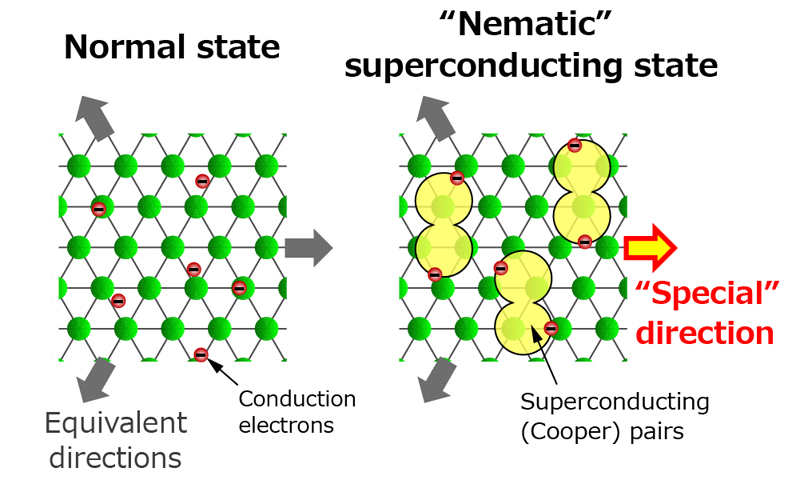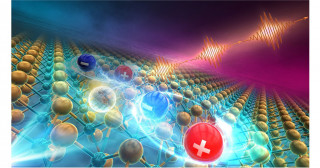Kyoto University reports the first real example of ' nematic superconductivity '
From high-speed trains to high-resolution images of the brain, scientists have found a wide range of applications for superconductivity.
Superconductivity is a state where a material loses electrical resistance, allowing for the construction of electrical systems that are smaller and don't waste energy to heat.
The lack of resistance in superconducting materials occurs when electrons form pairs, involving a phenomenon known as 'spontaneous symmetry breaking'. According to Shingo Yonezawa of Kyoto University, "What kind of symmetry is broken when a material enters its superconducting state is a central topic in the field."
In their latest report, published in Nature Physics , Yonezawa and his colleagues describe the first real case of rotational symmetry breaking in superconductors, a phenomenon referred to in recent literature as 'nematic superconductivity' because it "has a close resemblance to nematic liquid crystals."
The team came to this revelation by observing the behavior of a topological insulator with carrier doping, copper-doped bismuth-selenium compound (Cu x Bi 2 Se 3 ). They measured its specific heat to determine the number of broken electron pairs, which magnetic fields of varying orientation partially destroy, resulting in an increase in specific heat.
Yonezawa's team found a striking difference in the specific heat when the prevailing magnetic field aligned along one of the compound's three equivalent crystalline axes, indicating that the strength of pair formation breaks rotational symmetry of the underlying crystal structure.
The researchers initially doubted their findings. "We were surprised and excited, but on the other hand we were also skeptical. After careful examination, we are now convinced that this symmetry breaking must be true," says Yonezawa.
Having confirmed that nematic superconductivity exists in the real world, the scientists aim to further understand the implications of this phenomenon, which they say may lead to applications such as in the development of quantum computers.

In its normal state (left), electrons in the compound do not feel any difference in the compound's three crystal lattice directions, while in a superconducting state, the strength of the electron pairs is reduced in a particular direction, leading to 'nematic superconductivity'.
Paper Information
【DOI】
http://dx.doi.org/10.1038/nphys3907
Shingo Yonezawa, Kengo Tajiri, Suguru Nakata, Yuki Nagai, Zhiwei Wang, Kouji Segawa, Yoichi Ando and Yoshiteru Maeno. (2016). Thermodynamic evidence for nematic superconductivity in Cu x Bi 2 Se 3 . Nature Physics.





